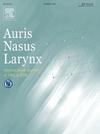用于计算评估的纯音测听模型:介绍日本的丰富经验。
IF 1.5
4区 医学
Q2 OTORHINOLARYNGOLOGY
引用次数: 0
摘要
包括“掩蔽”在内的纯音听力学是听力学医学中最基本的测试。掩蔽是基于声音感知和传播的理论模型,自20世纪50年代以来得到了广泛的讨论。在日本,从早期到最近,这种讨论已经广泛进行,并成功地实现了数学模拟,但这些成果很少向英语世界披露。在这里,介绍了日本的经验,并从适合学习掩蔽基础的“大原则(gp)”中明确推导出理论。为了避免常见的误解,我们对标准屏蔽模型和扩展屏蔽模型这两个模型进行了详细的解释,并将变量分为三类。特别提出了一种智能的启发式方法“ABC”方法,该方法充分利用了“充分掩蔽”和“覆盖掩蔽(交叉掩蔽)”,并对其准确性进行了计算机评价。作者希望这篇文章能作为研究者共同讨论的基础,并为那些有动机学习掩蔽的人提供理论介绍。本文章由计算机程序翻译,如有差异,请以英文原文为准。
Models for pure tone audiometry enabling computational evaluation: Introduction to Japanese extensive experiences
Pure tone audiometry including “masking” is the most basic test in audiological medicine. Masking is based on theoretical models of sound perception and propagation and has been widely discussed since the 1950s. In Japan, such discussion has been conducted extensively, starting from early periods up to recent times, with success to enable mathematical simulation, but the achievements have little been disclosed to the English-speaking world. Here, Japanese experiences are introduced with explicit theoretical derivation from “Grand Principles (GPs)” appropriate for learning the basics of masking. Two models, Standard Masking Model and Extended Masking Model, are explained in detail with variables classified into three categories to avoid common misunderstandings. In particular, a smart heuristic method called “ABC” method, which makes excellent use of “sufficient masking” and “overmasking (cross-masking)”, is presented with computerized evaluation for its accuracy. The author hopes that this article will serve as a common basis for discussion among researchers and as a theoretical introduction for those motivated to learn masking.
求助全文
通过发布文献求助,成功后即可免费获取论文全文。
去求助
来源期刊

Auris Nasus Larynx
医学-耳鼻喉科学
CiteScore
3.40
自引率
5.90%
发文量
169
审稿时长
30 days
期刊介绍:
The international journal Auris Nasus Larynx provides the opportunity for rapid, carefully reviewed publications concerning the fundamental and clinical aspects of otorhinolaryngology and related fields. This includes otology, neurotology, bronchoesophagology, laryngology, rhinology, allergology, head and neck medicine and oncologic surgery, maxillofacial and plastic surgery, audiology, speech science.
Original papers, short communications and original case reports can be submitted. Reviews on recent developments are invited regularly and Letters to the Editor commenting on papers or any aspect of Auris Nasus Larynx are welcomed.
Founded in 1973 and previously published by the Society for Promotion of International Otorhinolaryngology, the journal is now the official English-language journal of the Oto-Rhino-Laryngological Society of Japan, Inc. The aim of its new international Editorial Board is to make Auris Nasus Larynx an international forum for high quality research and clinical sciences.
 求助内容:
求助内容: 应助结果提醒方式:
应助结果提醒方式:


